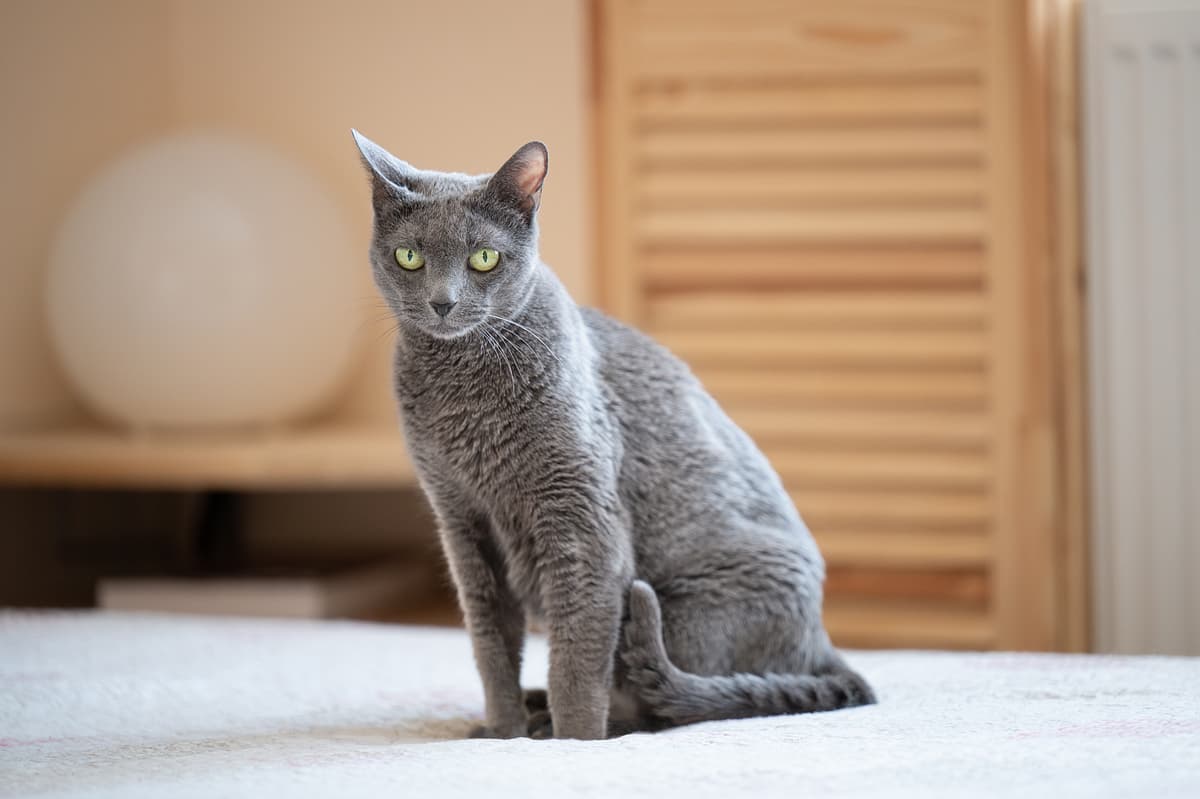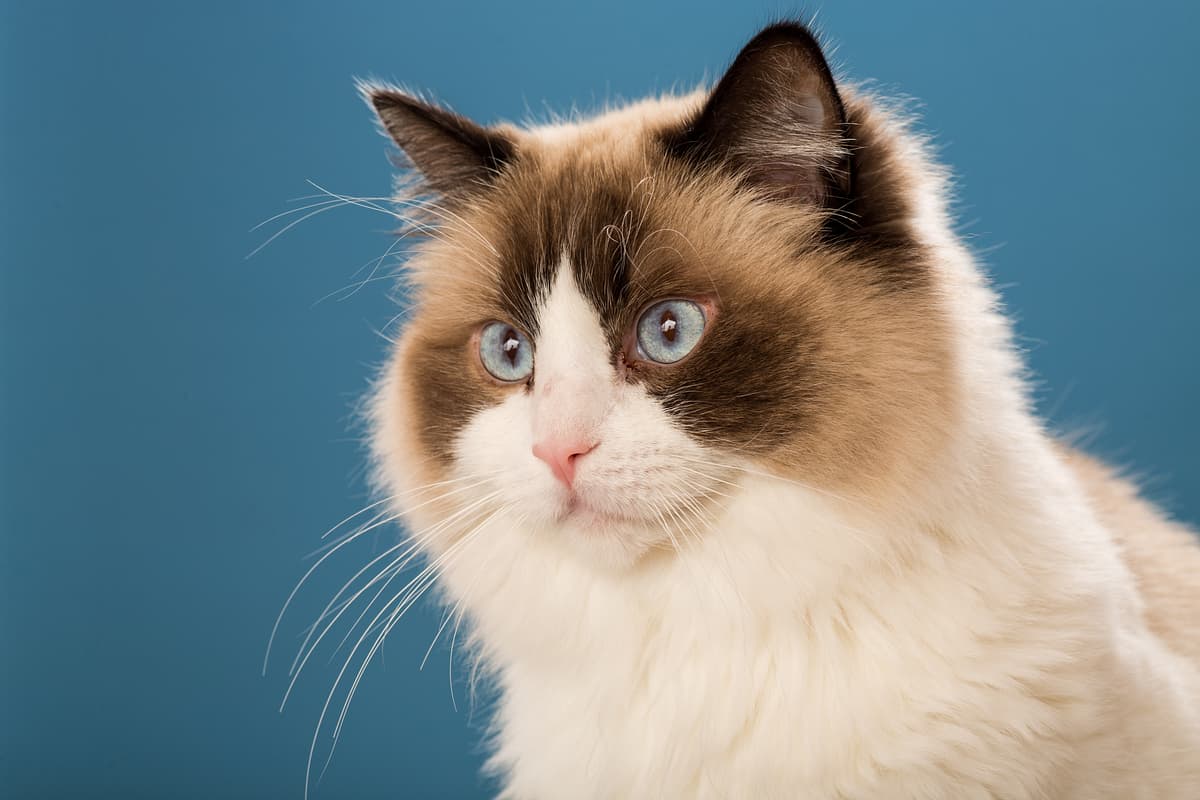Russian Blue vs Ragdoll
Discover the differences between Russian Blue and Ragdoll to make the best choice for your situation.
Try different breeds

Russian Blue
Graceful, intelligent, and quietly affectionate, this breed thrives in calm homes and forms deep bonds with its people. Soft blue-gray fur and vivid green eyes set them apart.

Ragdoll
Gentle, affectionate, and known for their striking blue eyes, Ragdolls thrive as loving companions. Their relaxed nature makes them perfect for families and those seeking a calm feline friend.
Quick comparison
Medium
3.5–5.0 kg
Shorthaired, plush double coat
12–16 years
2.5–4.0 kg
Moderately active
Large
6–9 kg
Longhaired, silky
12–16 years
4–6 kg
Low activity needs
Personality & behavior
Compare the personality traits and behavioral characteristics of both breeds.
Russian Blue
Gentle with family, reserved with strangers
Quick learner, problem-solving ability is high
Moderate activity, enjoys daily play sessions
Likes interactive toys and gentle games
Adjusts well to calm, stable environments
Ragdoll
Affectionate and gentle with people and children
Learns routines and simple tricks quickly
Prefers lounging over frequent active play
Enjoys interactive toys in short sessions
Adjusts well to new environments and changes
Care needs
Exercise, grooming, and daily care requirements
Russian Blue
Progressive retinal atrophy, urinary tract issues
Ragdoll
Hypertrophic cardiomyopathy, bladder stones
Suitability
How well each breed fits different living situations and families
Russian Blue
Easy to manage
Gentle temperament and low-maintenance grooming suit inexperienced owners well
Excellent choice
Quiet nature and moderate activity level suit smaller living spaces
Moderately suitable
Prefers calm environments and may not keep up with high activity levels
Needs supervision
Shy demeanor means careful introductions are needed with very young children
Usually compatible
Gets along with other pets if introduced properly and given time
Prone to loneliness
Russian Blues dislike extended solitude and can develop anxiety when left alone
Ragdoll
Highly suitable
Gentle temperament and easygoing nature make Ragdolls easy for beginners to manage
Perfect fit
Ragdolls adapt well to smaller spaces and are generally quiet and calm indoors
Not ideal
They are not especially energetic and may not match fast-paced or highly active lifestyles
Great choice
Their tolerant and patient nature makes them safe companions for families with young children
Very friendly
Ragdolls are sociable and typically get along well with other pets in the household
Prone to anxiety
They dislike being left alone for long periods and may develop stress or behavioral issues
Breed strengths
What each breed excels at and their best qualities
Russian Blue
- Affectionate with family members
- Low-shedding, hypoallergenic coat
- Intelligent and quick to learn
- Playful but not overly demanding
- Generally good health and longevity
Ragdoll
- Gentle and calm temperament
- Tolerant of handling and children
- Typically gets along with other pets
- Low tendency for aggression or scratching
- Affectionate and enjoys human company
Challenges & considerations
Potential challenges and considerations for each breed
Russian Blue
- Shy around strangers or guests
- Sensitive to changes in environment
- Needs regular mental stimulation
- Tends to gain weight easily
- Can become attached to one person
Ragdoll
- Prone to certain genetic heart conditions
- Requires regular grooming for long coat
- May develop obesity without exercise
- Slow to mature, both physically and emotionally
- Not suited for unsupervised outdoor life
Ready to choose your perfect breed?
Learn more about each breed or compare other breeds to find the perfect match for your lifestyle.
Discover more helpful tools
Make use of our other free tools to get the most out of your pet experience
